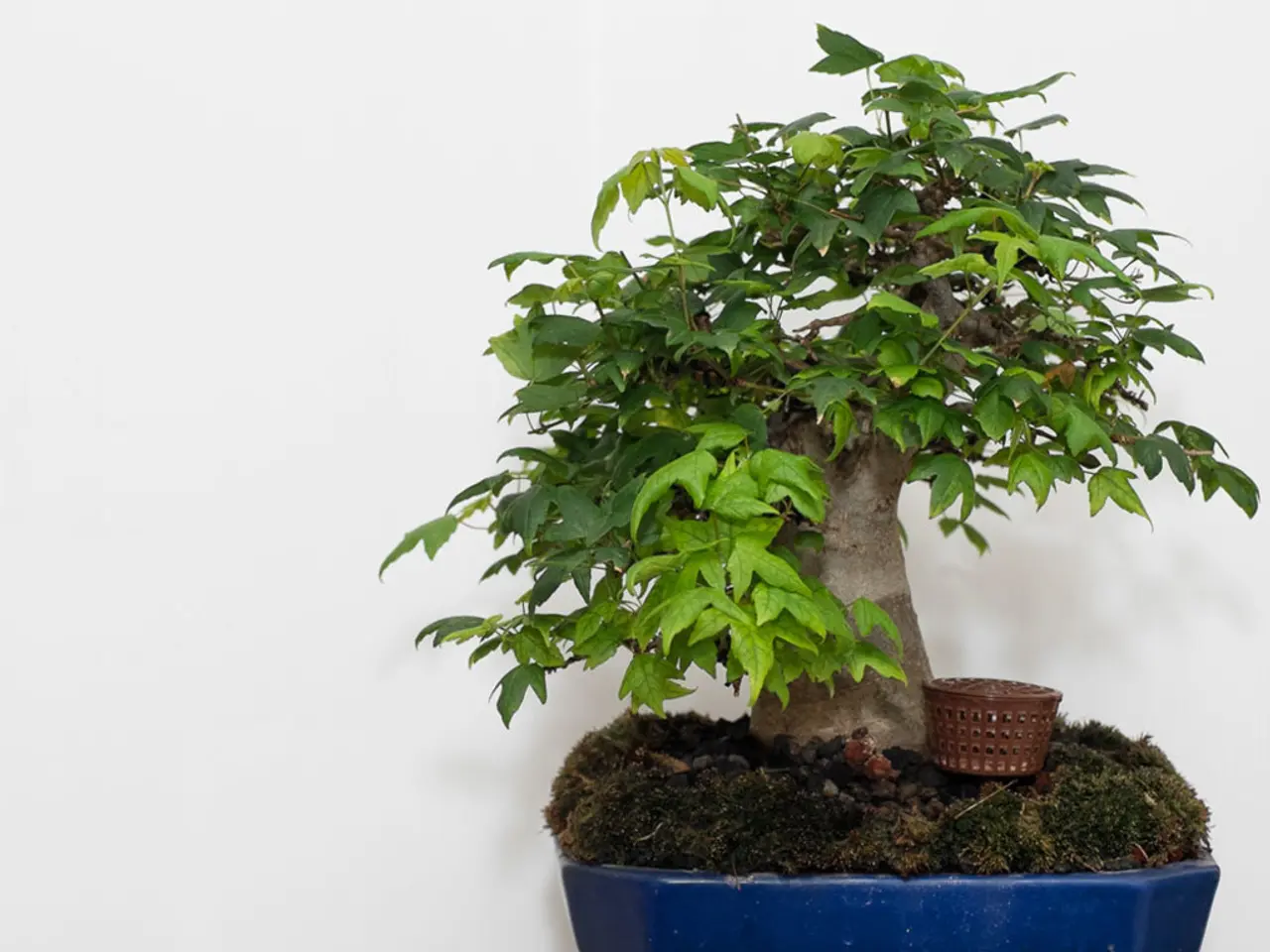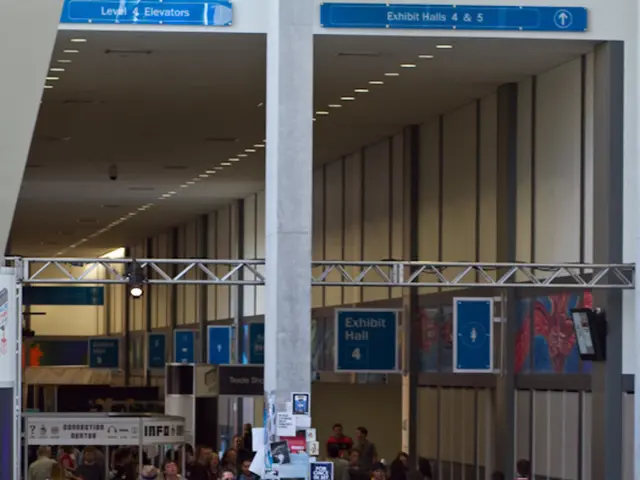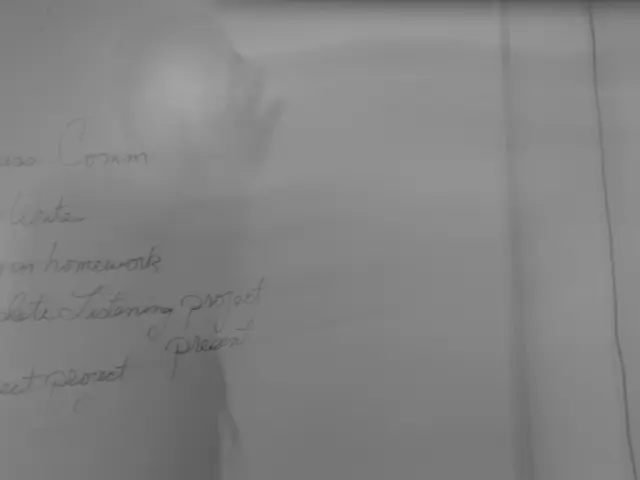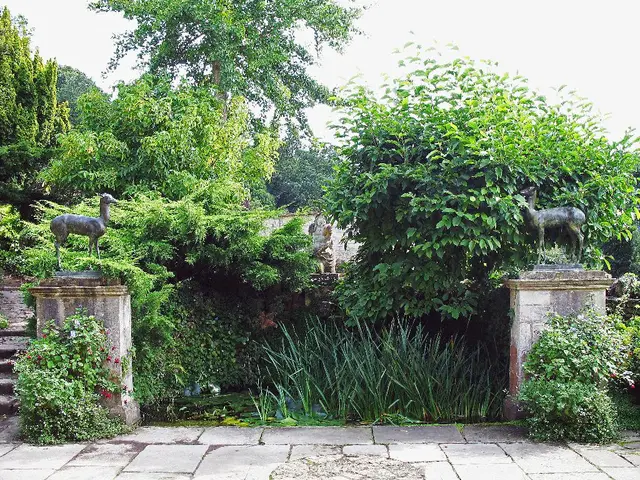Indoor Bonsai Development: Promoting Growth Under Restricted Light Conditions
Indoor bonsai can bring a touch of tranquility to any living space, but ensuring they thrive requires careful consideration of light, humidity, and species selection.
In situations where natural light is limited, supplemental lighting becomes a crucial component in promoting healthy growth. LED grow lights, known for their energy efficiency and longer lifespan, are a popular choice. Fluorescent lighting is also an alternative, albeit with slightly lower energy efficiency.
Vigilance is crucial in detecting the subtle signs of low-light stress, such as changes in color, texture, and shape. Regularly inspecting your bonsai is essential to catch early warning signs and take corrective action.
Managing light intensity is another crucial aspect of caring for indoor bonsai. Notably, 70% of indoor plants, including bonsai, respond positively to fluorescent lighting. The delicate balance of light and shadow orchestrates the harmony of growth in indoor bonsai cultivation, nourishing miniature trees that bring serenity to indoor sanctuaries.
When it comes to selecting the right bonsai species for low light conditions, favor tropical or subtropical species that tolerate shade. Ficus microcarpa ‘Ginseng’, a hardy and adaptable species, is especially suitable for indoor environments with medium to low light. Chinese Elm is another beginner-friendly option that adapts well but prefers bright light.
Avoid species needing strong or direct sunlight, such as jasmines, junipers, azaleas, or succulents. Native trees adapted to your local indoor environment, like some species of Ficus in India (Peepal, Banyan), can also be appropriate if light is sufficient and care is tailored.
Ensuring some bright indirect light and stable humidity enhances bonsai health in low light conditions. Regularly monitoring and adjusting light levels to accommodate changes in the bonsai's growth cycle and seasonal variations is also essential.
Experimenting with the timing and duration of supplemental lighting can help mimic natural daylight patterns, ensuring a balance between light exposure and rest periods. Positioning lights at a perfect distance can avoid scorching or burning while still providing sufficient energy for photosynthesis.
Using a light meter to measure the intensity of natural light in different areas of the home is necessary for assessing light conditions. East- and west-facing windows are ideal for indoor bonsai, as they receive gentle, indirect light that promotes healthy growth without risking scorching or overheating.
By crafting a harmonious space that nurtures miniature trees, thoughtfully selecting the ideal window orientation and augmenting with targeted lighting solutions, indoor bonsai can flourish even in the face of limited natural light.
Remember, differentiating between natural and artificial light stress requires a keen eye for subtle changes in foliage, color, and growth patterns, as well as a deep understanding of each species' unique light requirements. Careful pruning techniques can also promote healthy growth, vibrant foliage, and a balanced, harmonious appearance.
Lastly, providing a period of outdoor acclimation is vital to guarantee the tree's health and resilience, even when keeping bonsai indoors year-round. By following these guidelines, you can create a nurturing environment that supports the health and well-being of your indoor bonsai.
- For a lifestyle incorporating indoor bonsai, one may decide to invest in energy-efficient LED grow lights as a solution for low-light conditions, which can help promote healthy growth.
- In the pursuit of a tranquil home-and-garden setting, consider the choice of bonsai species wisely, opting for those that thrive in low light such as the Ficus microcarpa ‘Ginseng’ and Chinese Elm while avoiding sun-loving species like jasmines, junipers, azaleas, or succulents.



